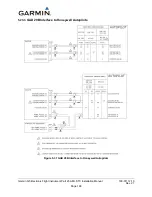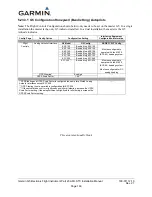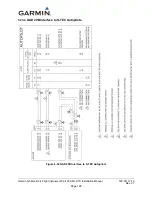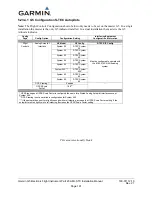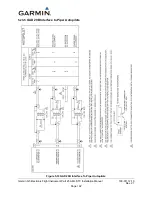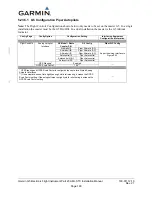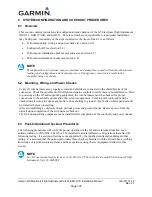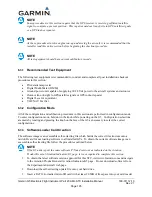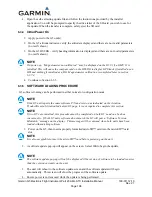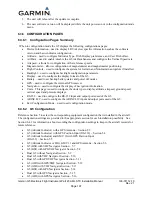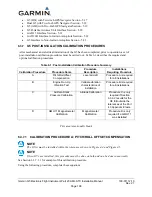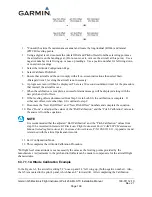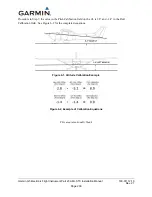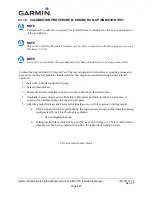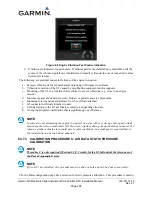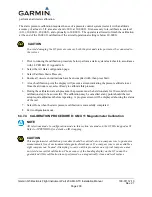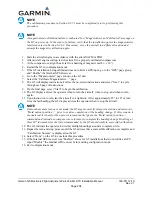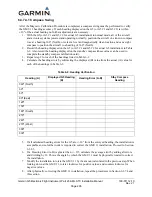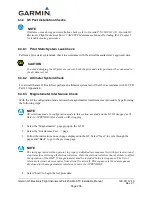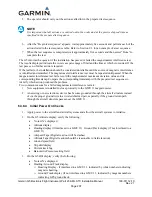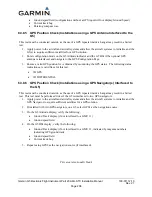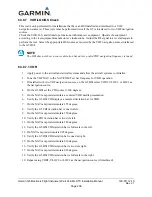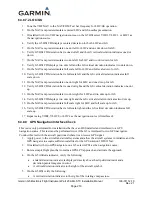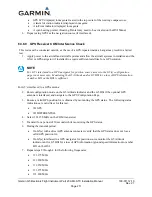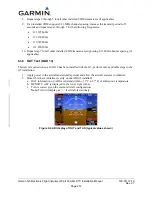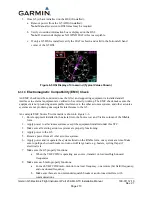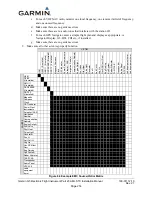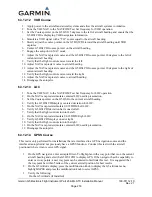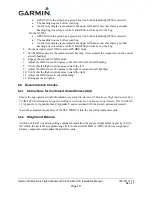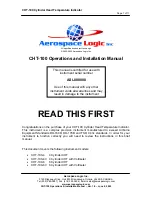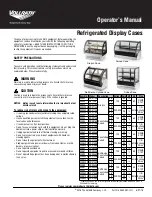
Garmin G5 Electronic Flight Instrument Part 23 AML STC Installation Manual
190-01112-10
Rev. 21
Page 202
Figure 6-3 Engine Vibration Test Failure Indication
6.
If failures are indicated, repeat the test. If failures persist, the installation is unreliable until the
source of the vibration problem is identified and remedied. Record the out of range limit values
for future reference.
The following are potential causes for failures of the engine run-up test:
a.
Excessive flexing of the G5 mechanical mounting with respect to airframe
b.
Vibration or motion of the G5 caused by neighboring equipment and/or supports.
c.
Mounting of the G5 in a location that is subject to severe vibrations (e.g. close to an engine
mount).
d.
Instrument panel shock mounts worn, broken, or permit excessive movement.
e.
Mounting screws and other hardware for G5 not firmly attached.
f.
G5 connector not firmly attached to unit.
g.
Cabling leading to the G5 not firmly secured to a supporting structure.
h.
An engine/propeller combination that is significantly out of balance.
NOTE
In some aircraft, attempting the engine run-up test on a day with very strong and/or gusty winds
may cause the test to occasionally fail. However, a failure during windy conditions cannot not be
taken as evidence that the test would pass in calm conditions; an actual pass is required before
the installation can be considered adequate.
6.3.7.3 CALIBRATION PROCEDURE C: AIR DATA STATIC PRESSURE
CALIBRATION
NOTE
Procedure C is only required if Section 6.3.8.2 results for the G5 fall outside the tolerances of
the Part 43 Appendix E tests.
NOTE
If two G5’s are installed, this procedure must be done on both and can be done concurrently.
The Air Data configuration page has a selection for static pressure calibration. This procedure is used to

